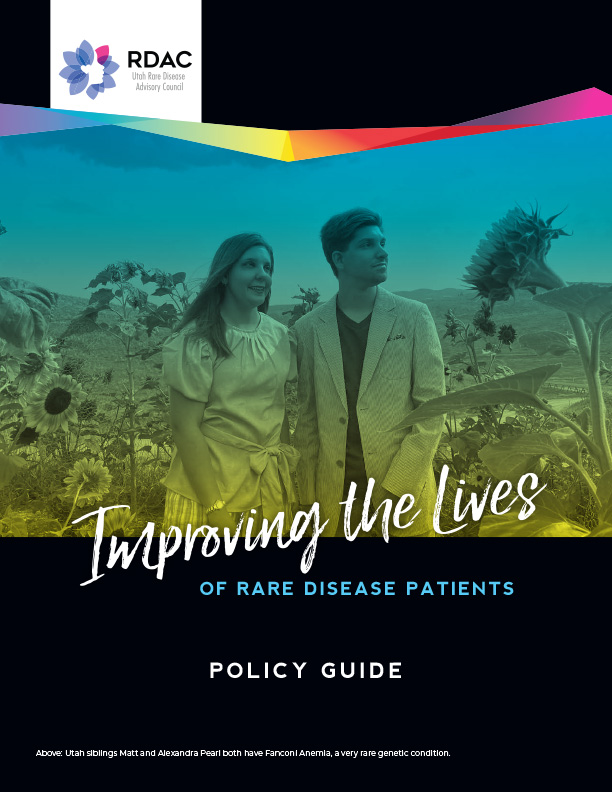RDAC Position
Copay accumulator programs impose a considerable burden on the community of people with rare diseases, adversely impacting their health and well-being. In addition to increasing out-of- pocket costs, the resulting skipped treatments can cause adverse health outcomes for patients, including rare disease patients. These adverse health outcomes may increase overall costs to other payers, such as state-sponsored health plans, insurers and pharmacy benefit managers. The RDAC recommends banning copay accumulator programs in the State of Utah.
Issue
For medical insurance coverage, many families and individuals have deductibles of thousands of dollars and may also have significant copays or coinsurance. Many patients, including patients with rare diseases, receive financial assistance from drug manufacturers and other third parties to help pay for their medications, which frequently include high-cost specialty medications that are used long-term. This financial assistance significantly helps these people meet out-of-pocket costs, including deductibles, copays and coinsurance, so patients can access proven interventions.
Some insurance companies have instituted copay accumulator programs that typically target specialty drugs for which third-party copay assistance is available. The accumulators prevent copay assistance from applying to a patient’s out-of-pocket costs for health insurance deductible, copays and coinsurance. Consequently, patients who depend on third-party support must still pay the full copay, coinsurance, and/or deductible, despite a third-party having already paid it on their behalf. The result is unnecessary financial hardship and increased likelihood of treatment non-adherence, which can lead to a more advanced disease state and/or increased disability for patients.
Families and individuals, especially those who have rare diseases with high treatment costs, face decisions about whether to delay or postpone visits and care based on achieving their respective out-of-pocket costs. According to Doug Long, vice president of industry relations for IQVIA, prescription abandonment at pharmacies by patients has been fueled by cost shifting to patients, including copay accumulators. In 2021, 60% of prescriptions with patient monthly out-of-pocket costs of $125 or more were abandoned at pharmacies. Skipped medical visits, treatments and prescription pickups may result in deterioration of the patient’s condition and lead to significantly increased costs for hospitalizations, office visits and treatments that otherwise would likely not have been incurred. In addition to increasing costs for additional care, deterioration of the patient’s health may interfere with the ability of patients and caregivers to be contributing members of society.
The burden of copay accumulator programs is clear. Applying payments derived from all sources, including out-of-pocket and copay assistance program payments, to insurance deductible, copays and coinsurance would enable families and individuals to meet their financial obligations with minimal interruption of care.
